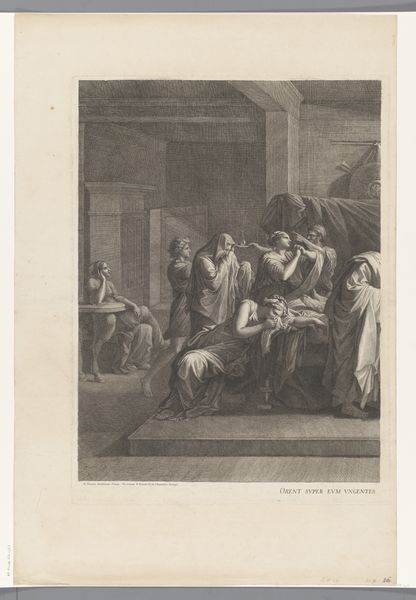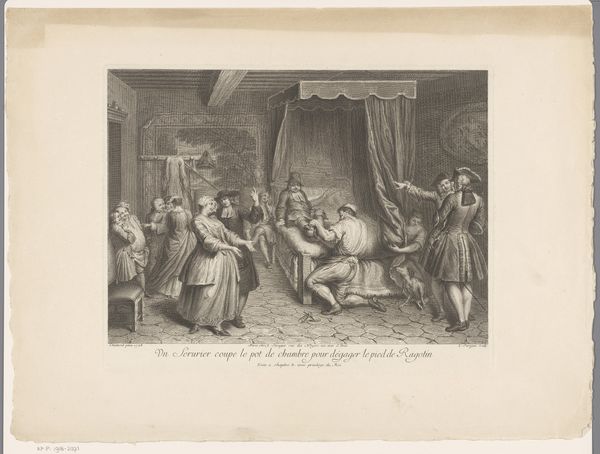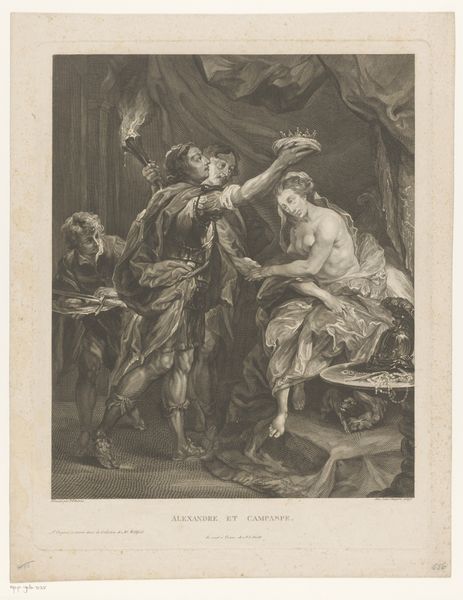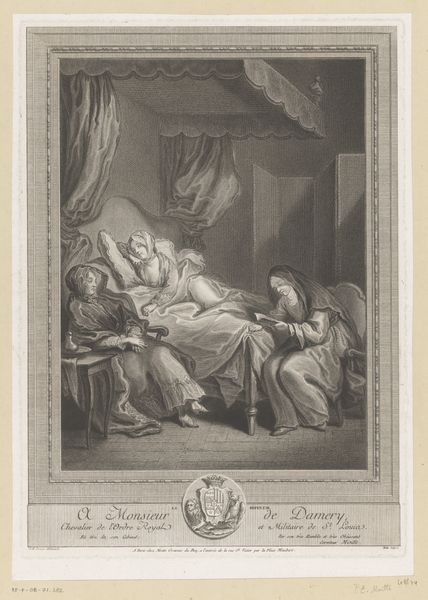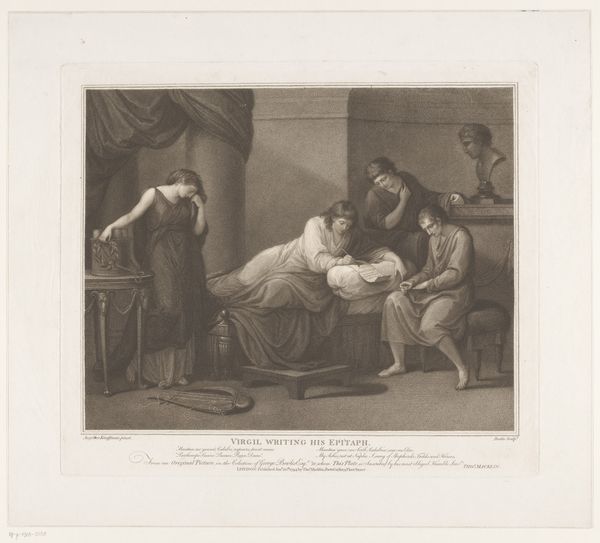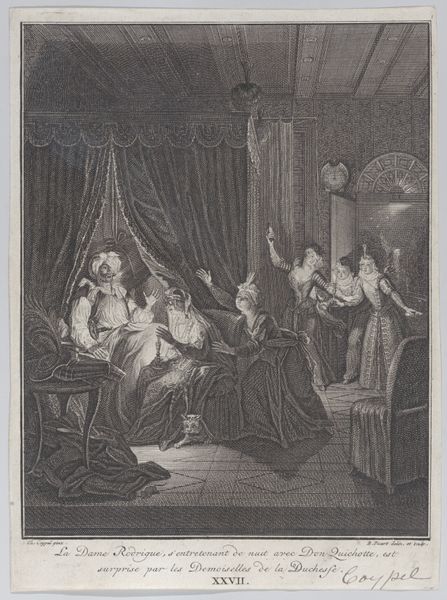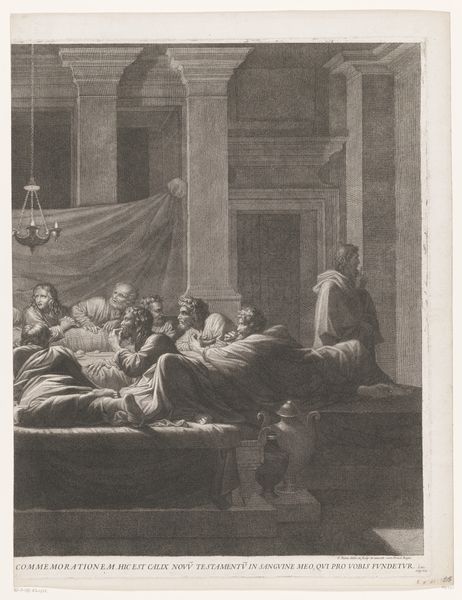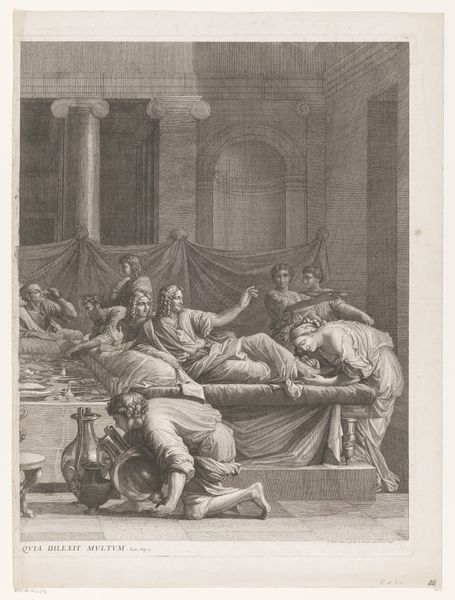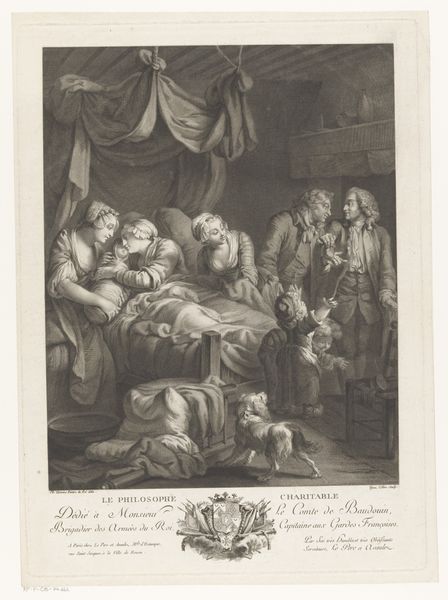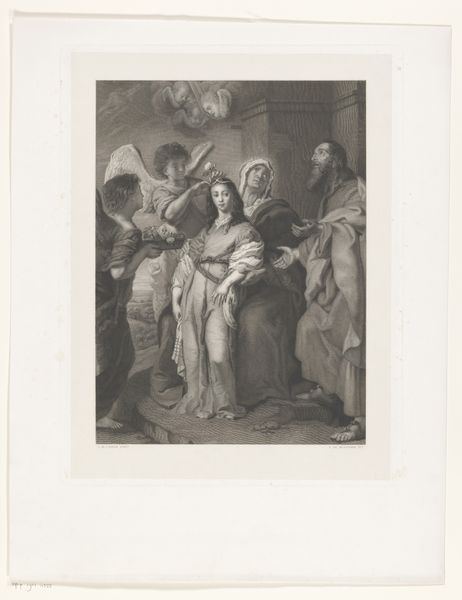
print, engraving
#
baroque
# print
#
figuration
#
history-painting
#
engraving
Dimensions: height 608 mm, width 460 mm
Copyright: Rijks Museum: Open Domain
Curator: The drama is palpable, isn't it? The staging and the intensity of feeling… it almost vibrates off the print. Editor: Indeed. We're looking at "Heilig Oliesel (rechter deel)," or Holy Unction, the right section, an engraving that experts date roughly from 1633 to 1700 and which is held at the Rijksmuseum. The print is by Jean Pesne, whose engravings often captured significant historical and religious scenes. Curator: It does carry a weight of historical association. Tell me, does it strike you, too, as an almost theatrical display? Look at the figures clustered around the bed, a real mix of anguish and reverence. Is this about real suffering, or how suffering should be performed? Editor: Well, the sacrament of Holy Unction is, after all, about preparing for death, both physically and spiritually. Pesne captures that moment of vulnerability but also communal ritual, an important process socially and religiously, especially in the context of baroque sensibilities. Think about it: The patient is surrounded not just by priests but what look like family or friends, actively participating in this transition. It blurs the lines between personal and collective experience. Curator: Exactly. And how is the meaning, then, negotiated between these realms? I'm particularly drawn to the gestures. The upraised hands… are they expressions of supplication, or are they directing something divine downward? Even the architecture of the room feels laden with symbolism, particularly how the light interacts with the textures and draping. Editor: You raise an excellent point about light. It serves almost like a character itself, illuminating the patient's body while casting a long shadow from a man standing near. In terms of social context, images like this also helped reinforce the church's role in marking life's major passages. And prints were an important medium because this made potent imagery like this widely accessible. Curator: The availability speaks to its influence. Thank you; viewing Pesne’s print together, focusing on these interwoven perspectives, offers a glimpse into not just religious ceremony but baroque sensibility itself. Editor: Agreed. I appreciate having these moments unpacked, too. Seeing a print like this with fresh eyes always brings new levels of context.
Comments
No comments
Be the first to comment and join the conversation on the ultimate creative platform.
